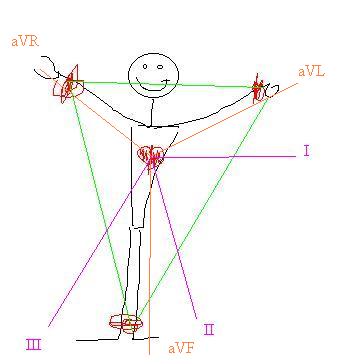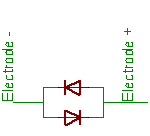The great Slashdot effect
First, let me thank everyone who came to visit my web page. Even though
it caused the dreaded Slashdot
effect, I appreciate the interest.
Second, let me apologize for the Slashdot effect. Both to the
University of Utah and all the people coming to see my web page. I
underestimated the effect Slashdot users have on servers. A 100Mb/s
bandwidth is not enough to sustain all you great users. Although I do not
know the exact bandwidth we have, I have on occasion downloaded large files off
the U's server at near 100Mb/s. (Locally, on site, but it still had to go
through the web server). My guess is that it was really the server that
got bogged down and not the bandwidth.
Now that I have admitted my stupidity, I need to thank everyone who has sent
me emails. I have paraphrased some of the emails I thought were the most
interesting. I apologize if I did not list yours. This does not mean
I thought your email was stupid, but it either was asked by someone else or
didn't think others would benefit as much with it.
The negative peak on your waveform looks normal. A real industrial
EKG uses 12 leads I think, one on each arm, one on each leg, and then a stripe
across the chest and a few for extra good measure. Depending on where you
attach the electrodes you'll see different waveforms.
Thanks to all that responded about my negative spike. I'm a little
disappointed that I'm not a mutant, but I
guess there's always Batman.
Also, some have suggested some good web sites on how to read ECGs.
Here's a few.
http://endeavor.med.nyu.edu/student-org/erclub/ekghome.html
http://bmj.com/cgi/content/full/324/7334/415
http://www.angelfire.com/or/CardiacLinks/EKGlinks.html
Oh, and I just loved this picture. I've always been bad at drawing
things on the computer, but this guy took the time to draw pretty pictures to
try and explain the stuff to me. Thanks!

Your waveform is screwed up. P-wave is missing (ie. peak #1 on the
example graph). The T wave is ugly (peak #3)....
Yep, you're right! This is an ugly waveform. Part of it is due
to electrode placement, and part is due to the interface with the sound
card. I have tried moving the electrodes around and can make the P-wave
appear, so my choice during this test was poor. As for the sound card
interface, some of the ugliness went away with my signal processing, however,
I didn't include it because everyone's sound card is different and trying to
calibrate the math to remove the artifacts are not easy. If those
reasons aren't why my waveform is screwed up, then I guess I'm more of a
mutant that I thought. :)
Try putting two diodes in opposite directions across any two electrodes.
 Great idea! The more protection, the better.
Great idea! The more protection, the better.
How about making an EEG (brain wave monitor)?
That would probably be the next thing I work on. However, I am not
sure how easy it would be. One thing that would make it even cooler is
to see if I can use the EEG to control my computer. :)
KY Jelly makes a great electrode gel.
Unfortunately, I don't have any of that stuff around, but I'm glad to know
it's the same stuff they use on the real electrodes. One question
though: does it leave my chest smooth and touchable like lotion? :)
You may get better results, and have to use slightly less lotion, by using
pennies dated prior to 1982. Why's this, you ask? In 1982 the US
Mint changed the compostition of the cent. They started using
copper-plated zinc about half-way through the year. Cents dated 1947 - 1981 are
90% copper and 10% zinc. Cents from before WWII are bronze (various mixes
of copper, nickel, and tin. They changed they alloy a few times). So by
using pre-1982 cents, you ought to get better conductivity.
Cool facts. Do you tend to win all of the trivia games?
Isolate! Isolate! Isolate! You need better electrical
isolation!
Yes I do. In my experiment, I was 99.9999% confident on my
safety. There are no other grounding places within 3 feet of me.
My power supply is electrically isolated. My house is properly
grounded. The only way that I could create a ground loop is for someone
to walk by and touch a 120V line to me. In which case, I have bigger
things on my mind (someone trying to kill me). Everyone else has a
different situation, so PLEASE BE CAREFUL!
For even better safety, consider using an optoisolator, a laptop, or some
other means to isolate the 9V source with the computer.
It's been done. Ramsey Electronics/Scientific American made the same
system.
:( Oh well, I guess I'll just have to be the first man to walk on
Mars.
Connect the ECG to a portable cassette recorder. Then you can record
the waveform for later playback.
I love this idea! Then you get isolation as well as recording
capabilities. You can technically record via the Windows sound recorder,
but that takes a ton of disk space. Yes, you can buy 40GB hard drives
for $30 these days, but still......... electrical isolation!
Try doing ___________ to get the lower frequencies.
You guys come up with the best ideas. I've heard about chopping the
signal so that it's interlaced with around 1000Hz. I've heard to use an
intermediate frequency carrier like the way FM works. I've heard to use
an ADC to get the waveform out. All very good!
Can I use a different op-amp to build this project?
Yep! But you may need to look at the specifications before you
do. If you go to Radio Shack, I suggest you get the LM324. It's a
quad op-amp and supposedly low power. Some things to look for is the
range of the output (how much of the VDD supply can it operate out of), the
input impedance (make sure it has 10^7 or higher), and has low enough noise
(50nV/Hz^.5 or lower).
Someone also informed me I neglected to consider the noise factor. I
used a JFET op-amp which has flicker (1/f) noise. They were right.
I didn't even think about it. Basically, 1/f noise is noise that gets
worse with lower frequencies. Since we're dealing with small signals and
low frequencies, this noise is significant. Luckily, I didn't have noise
issues because it's low enough, but a better design would use another op-amp
such as the LM324. It has lower power, it's cheaper, it comes with 4
op-amps....I'm beginning to wonder why I chose the LF353.
You should try to put the electrodes on your arms, and left
leg. Then you'll get a more "standard" ECG.
I have tried putting the electrodes on both arms and the ground on my
leg. Unfortunately, it didn't get rid of the negative peak.
However, some one else said they have put them on both arms and they also get
a negative peak. So at least I'm not the only freak out there. :)
Have you tried using a real ECG or read the ECG of someone else?
Not yet. One of these days I'm going to have to bring a laptop to the
local hospital and show off my ECG. If it's not a busy day, some of the
nurses and doctors may get a kick out of my device. They may even let me
compare my waveform with a real ECG.
Also a great way to meet a cute doctor/nurse. (It's not only the
girls who want to meet a cute doctor). If this turns out to be a great
way to meet a cute (I'll be politically correct) person. I'll post the
results at slashdot. ;) Forget the slashdot effect! Us geeks
need to find ways to meet girls!
You loser. You didn't expect the slashdot effect?
Sorry again. I'm an idiot.

 Great idea! The more protection, the better.
Great idea! The more protection, the better.